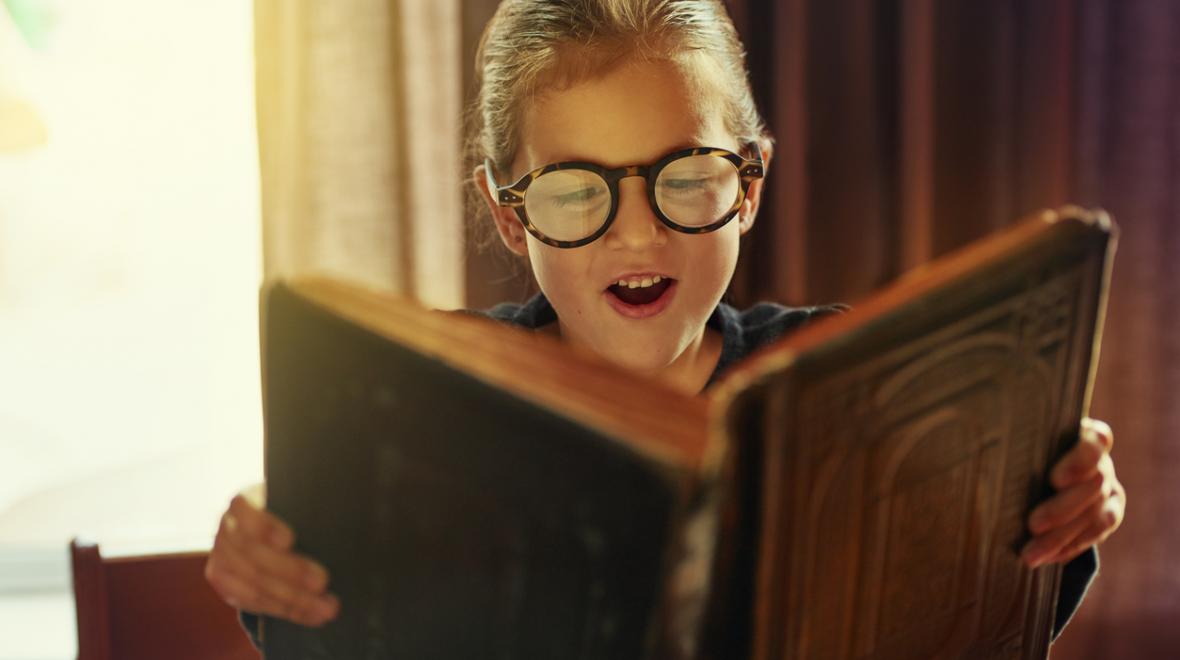
Like “The Lord of the Rings” did for high fantasy, the “Harry Potter” series created a template for kids’ fantasy books. The Boy Who Lived is an indelible part of our culture, one that won’t go away any time soon. With its emphasis on respect for difference and smattering of real-world diversity among the students, the series was relatively progressive for its time — the first book was published in 1997.
But standards for diversity have changed, and efforts to reverse-engineer the stories to be more inclusive have not been very successful. Now, transphobic comments made by series author J.K. Rowling have many families looking for authors they can support with a clearer conscience. We’ve rounded up some more inclusive (mostly middle-grade) fantasy book series that capture some of the same magic as Harry Potter.
‘Raybearer’ by Jordan Ifueko
Tarisai has several things in common with The Boy Who Lived in this fantasy book series. Grew up without a loving family — check; learns about her mysterious future at age eleven — check; lives in a world with magic — check. But, unlike Harry, Tarisai discovers her mother’s evil plan and resolves to write her own destiny rather than be manipulated by her magical control. Ifueko crafts a world plagued by imperialism, poverty and misogyny, and illustrates the need for social change, inspiring readers to fight for it. If you want to continue following Tarisai’s adventures, check out book two in the series, "Redemptor."

‘The Witch Boy’ by Molly Ostertag
In this engaging graphic novel, thirteen-year-old Aster is part of a family where all the girls are raised to be witches and the boys are raised to be shapeshifters. Bur Aster still hasn’t shifted, and he’s fascinated by witchery, no matter how forbidden it might be. When a mysterious danger threatens the other boys, Aster knows he can help — as a witch. It will take all Aster’s courage, and the support of his non-magical best friend, to be who he truly is. You can join Aster on more adventures in the two other books in this fantasy book series, "The Hidden Witch" and "The Midwinter Witch."
‘Lumberjanes. Vol. 1, Beware the Kitten Holy’ by Noelle Stevenson
Follow the adventures of Jo, April, Mal, Molly and Ripley as they attend camp for hardcore lady-types. Things might not be what they seem, but these dynamic girls are not going to let anything stop them from having a super fun time at summer camp. The campers find themselves caught up in a mystery that involves paranormal goings-on, a mysterious lighthouse, a trap-laden underground cave and a nearby camp for boys. This engaging story of friendship and bravery is great for kids ages 10 and older. Noelle Stevenson is also the author of several more Lumberjane volumes in this series of fantasy books, and "Nimona" which was recently made into a Netflix film.
‘Sal & Gabi Break the Universe’ by Carlos Hernandez
Sal is just an average 13-year-old who’s an amateur magician with the inexplicable ability to open holes in the space-time continuum. Struggling to adjust to a new school, Sal befriends Gabi Reál, the student body president and ambitious journalist, whose unconventional family helps ease his transition. When Gabi’s sick younger brother takes a turn for the worse, Sal’s magic might be just what they need to save him, unless it destroys the universe. This book includes Spanish dialogue and slang, is filled with deliciously described plates of Cuban cuisine and is highly inclusive, featuring a sprawling, memorable cast, including Gabi’s collection of gender-spanning dads.
 ‘The Deep & Dark Blue’ by Niki Smith
‘The Deep & Dark Blue’ by Niki Smith
In this middle-grade graphic novel, Lambda Literary Award-nominated author Niki Smith presents magical schooling with positive trans representation. Royal twins fleeing a coup take refuge with an order of magical women called the Communion. As the twins learn more about the Communion, and themselves, they must decide whether to fight to regain their royal status or stay in the magical world they have discovered.
‘The Underland Chronicles’ by Suzanne Collins
Author Suzanne Collins (of “Hunger Games” fame) says she wrote the fantasy book series “Underland Chronicles” as a modern, urban update of “Alice in Wonderland.” But like a certain wizard, 11-year-old Gregor has an entire series devoted to his adventures in a secret world that exists right next to (or technically, under) our own. In the normal world he’s just a kid living in a low-rent apartment, but in Underland, he is the chosen one of a dangerous prophecy. Real-world categories of diversity are unaddressed, but in Underland, Gregor overcomes prejudice again and again as he finds allies in the very creatures he’s been taught to revile. Be prepared to shed tears over the death of a cockroach.
 ‘Kiranmala and the Kingdom Beyond’ by Sayantani DasGupta
‘Kiranmala and the Kingdom Beyond’ by Sayantani DasGupta
In this middle-grade series, Kiranmala thought she was an ordinary sixth-grader from New Jersey until the morning of her 12th birthday. No owls were involved, but on that day, she discovered she was actually a magical Indian princess fated to save the world — and her parents — from demons. In book three, Kiranmala is introduced to her new best friend, who is nonbinary.
‘Little Witch Academia’ by Yoh Yoshinari
Queer representation in this manga fantasy series is ambiguous at best, but the magical school in this Japanese series is every bit as delightful as Hogwarts. In a fun twist, the protagonist is not fated to be the best and strongest witch, but in fact lacks any magical ability at all. This three-book series is great for younger kids, and there’s an anime adaptation. (“Sailor Moon” is a different anime genre, but offers more gender diversity in a magical universe.)
 ‘Snapdragon’ by Kat Leyh
‘Snapdragon’ by Kat Leyh
Better known for the supernatural summer camp series “Lumberjanes” (also a contender for this list), Kat Leyh’s “Snapdragon” is a tween-friendly magical realist graphic novel. There is no magical boarding school, but the protagonist Snap does receive a magical education from the local witch in their small, gender-diverse town.
‘Cattywampus’ by Ash Van Otterloo
The competition between witching families in “Cattywampus” is much more serious than Hogwarts houses dueling for the House Cup. But when two young witches from Appalachia accidentally resurrect an entire graveyard of their feuding ancestors, they have to pair up to find the counter-curse while dealing with tough life issues — including sexual identity.
 ‘Akata Witch’ by Nnedi Okorafor
‘Akata Witch’ by Nnedi Okorafor
Often called the Nigerian Harry Potter, the “Akata” series is ongoing, with two books released so far. Like Harry Potter, 12-year-old albino Sunny is a misfit who discovers she has magical powers and is whisked off to a magic school where she and her classmates must catch a killer. However, in this series, the murderer targets children, and the violence is more graphic than anything that happens at Hogwarts. Despite the young age of the protagonist, readers should be a bit older before starting this one.
‘Legacy of Orïsha’ by Tomi Adeyemi
Taking place in a fantasy world inspired by West Africa, the two books in Adeyemi’s “Orïsha” series depict a world in which Maji used to live side by side with the powerless. Now, the Maji have been all but wiped out, and only a few magical youths survive, training in secret until the day when they must inevitably fight the war to regain their freedom. This is a YA series, but no weightier (literally and figuratively) than the later Potter books.
Looking for more?
We created this list in consultation with Seattle Public Library’s children’s librarians, who have provided more great middle-grade and YA options than we can fit in one article. Hennepin County Library in Minnesota has also created this great list of Magic School Readalikes.
Rick Riordan, whose Camp Half-Blood has always given Hogwarts a run for its money, has made an obvious effort since the “Percy Jackson” series to make his books more inclusive, with representation of different races, religions and gender identities. Even more meaningfully, Riordan has used his platform to establish the Rick Riordan Presents publishing imprint that releases #OwnVoices stories of magic and mythology for middle-grade readers.
This article contains affiliate links. If you purchase products through links on our site, ParentMap may earn an affiliate commission.











